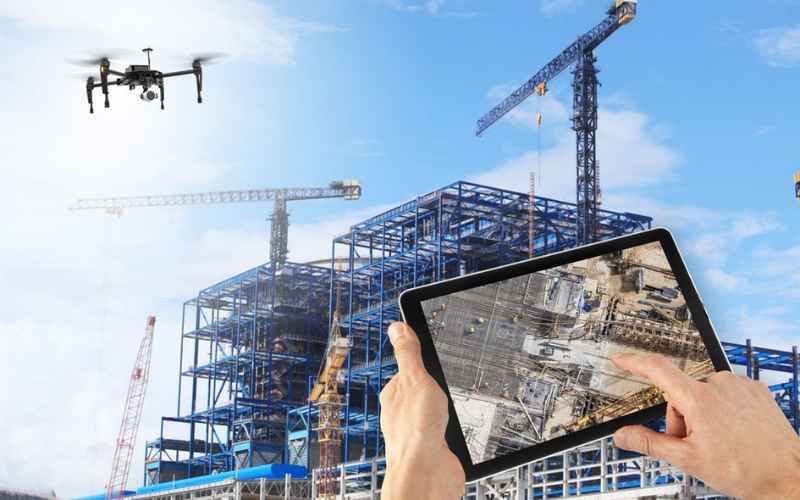The construction industry has truly become quite different as it changes gears nowadays through technological advancements and innovations in practice. Today, the new 2025 landscape continuously changes with an old-fashioned amalgamation of crafts and innovative technologies to attain a contemporary focus on sustainability, efficiency, and durability. As such, knowing all these changes makes it essential for every construction firm in St. Louis or elsewhere in Missouri to be updated and remain competitively relevant to clients.
Emerging Trends in Construction Technology
1. Building Information Modeling (BIM)
BIM: designing, constructing, and delivering. The practice in BIM will be used to incorporate rich 3D models of structures. Models can contain any type of information ranging from a description of the kind of material used up to cost and schedules with other modes of risks.

As experts say, “BIM minimizes errors while expediting communications by stakeholders as assured of its delivering projects timely at a minimal expense.”
2. Green building materials

Sustainability has been the new cement for modern construction. Green building materials such as recycled steel, bamboo, and low-carbon concrete are slowly catching steam. Although they may carry good environmental features, they offer improvements in energy efficiency and durability. A Missouri-based firm seeking to emulate such an effort would likely witness the demand for green infrastructure snowballing on its doorstep.
3. Prefabrication and Modular Construction

This is done by making the industry faster and cheaper. They come with pre-assembled parts to be installed on-site. This also decreases the aspects of waste, a shorter time, and much higher quality control.
4. Drones and Robotics

It brought unprecedented accuracy and speed with drones and robots. This includes the usage of drones in site surveying, progress tracking, security scanning, and providing real-time data. Robots can do repeated work such as laying bricks, paving the ground, and welding, which saves labor costs and enhances productivity.
5. Smart Construction Technologies
The Internet of Things (IoT) and smart sensors make sites more secure and efficient. IoT devices monitor equipment usage, track inventory, and predict when maintenance might be needed. Such innovations ensure minimum downtime and help enhance the general performance of the project.
Major Construction Technology Trends
1. Modular and Prefabricated Construction
It is one of the newest trends in the building industry. The technique looks to manufacture building components off-site and assemble them on-site as soon as possible. This reduces time while minimizing waste and enhancing quality control. Therefore, this trend is likely to become much larger with even more construction companies in St. Louis adopting the techniques to meet the growing demand for efficient building solutions.
2. Generative AI in Design
Generative AI is transforming the design sector, enabling architects and engineers to generate multiple designs based on parameters. This technology simplifies the creative process by delivering innovative solutions that optimize functionality, aesthetics, and sustainability while reducing human error. As generative AI continues to develop, its incorporation into the design phase will become the norm among construction companies in Missouri.
3. 3D Printing Technology

The adoption of 3D printing technology will change building design. It can design complex shapes with minimal error and customize components, thereby reducing the waste of materials and producing faster completion dates for a site. Therefore, this technology revolutionizes the world in using recycled materials in building processes, which is much more environmentally friendly than other conventional building techniques.
4. Digital Transformation and Smart Construction
Digital technologies are increasingly being integrated into processes, enhancing project management and collaboration. Tools like Building Information Modeling (BIM) enable real-time data sharing among stakeholders, improving efficiency and reducing costs. The use of augmented reality (AR) is also on the rise, providing real-time overlays of digital information onto physical spaces, which aids in decision-making during projects.
5. Focus on Worker Health and Well-being
Against the recent health crises throughout the world, the construction sector must be more careful about worker health and well-being. In this direction, buildings are now constructed with facilities for better ventilation, natural lighting, and biophilic design that improves the bodily and mental condition of the human being. That is a very large movement of healthier environments in residential and commercial places. To resist the adoption of new technologies:

The benefits of technology are obvious, but the adoption process has its difficulties. For instance:
- High Initial Costs: It is costly to invest in the latest tools and software, which can be a challenge for smaller companies.
- Skill Gap: Many workers require training to effectively use new technologies.
- Resistance to Change: Traditionalists in the industry may resist the new methods.
To overcome these challenges, long-run advantages such as improved productivity and savings in expenditure through operation need to be captured.
The great Peter Drucker rightly said: “The greatest danger in times of turbulence is not the turbulence-it is to act with yesterday’s logic.”
Prospects of the Future for the Construction Industry
- 3D printing: It has already begun to disrupt the sector of the construction of small homes, and it will become more viable for bigger projects. It allows for unparalleled customization and reduces material waste.
- AI: AI-based tools will help in planning projects, managing risks, and making decisions by reviewing huge datasets.
- Autonomous Equipment: Driving machinery on construction sites will soon become a new normal as it boosts effectiveness and safety.
- Digital Twin Technology: This is developing the virtual model of a physical structure to monitor its performance and predict maintenance needs.
Local Projects in the Spotlight
Washington University School of Medicine Neuroscience Research Building: This project exemplifies how local firms leverage advanced technologies to enhance research facilities while adhering to stringent timelines.

Sustainable Commercial Developments: Most of the companies in St. Louis have focused on sustainability through green building materials and energy-efficient technologies in the projects.
Effect on Local Construction Companies
Technology trends would bring great business boons for a construction company in St Louis or any city in Missouri with improvements in the timeliness of completion of projects to the needs of environmentally conscious clients. Technology drives a business line to stay in stride with what is transpiring in competitive markets. For an industry leader, “innovation distinguishes between a leader and a follower.”
Conclusion
Construction technology and trends are changing the face of an industry, bringing with them opportunities for growth and improvement. Companies can then offer better results and address matters of sustainability and efficiency by embracing innovations such as BIM, green materials, and smart technologies. For a construction company in St Louis or Missouri, staying ahead of trends is not only a choice but an absolute necessity as the landscape within construction continues to transform.
Industry expert Chris Hsu once said
“The future of construction depends on embracing innovation while remaining committed to safety and quality.”
This feeling is strong within the construction industry Missouri, as companies look to balance progress with responsibility.





